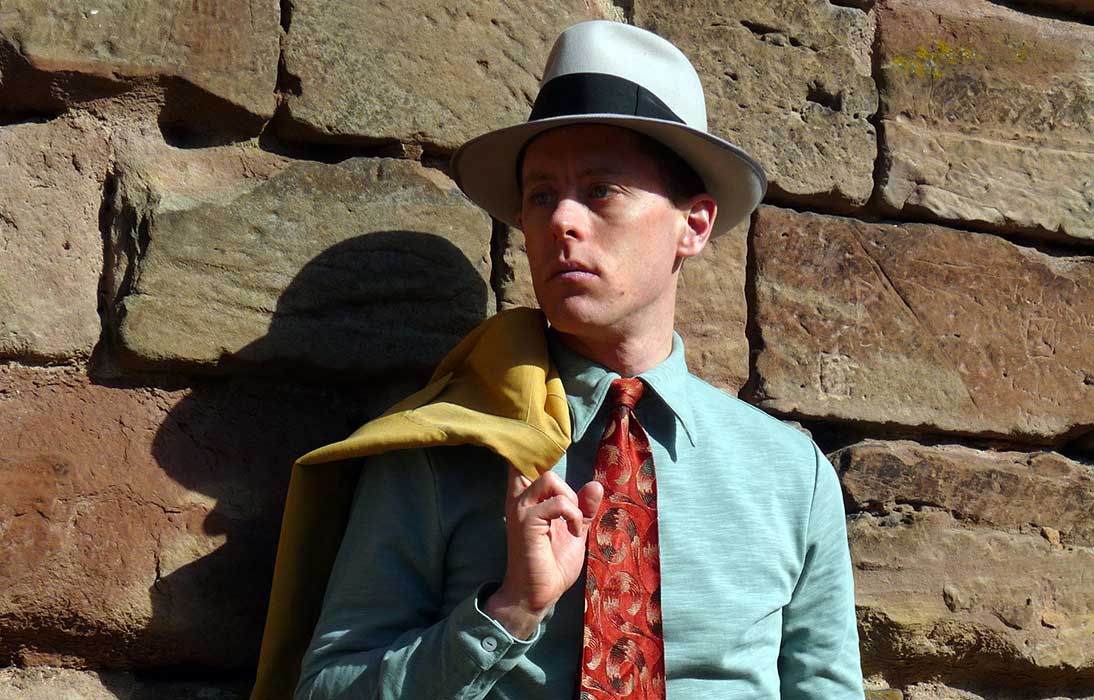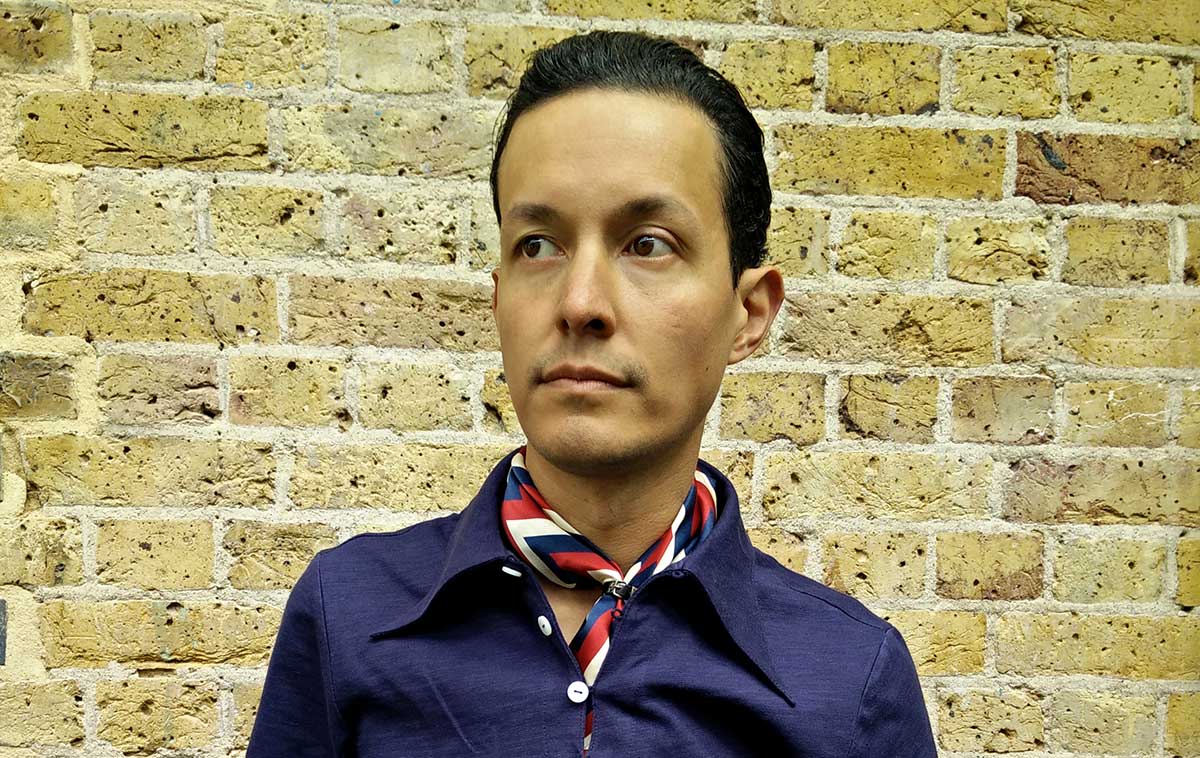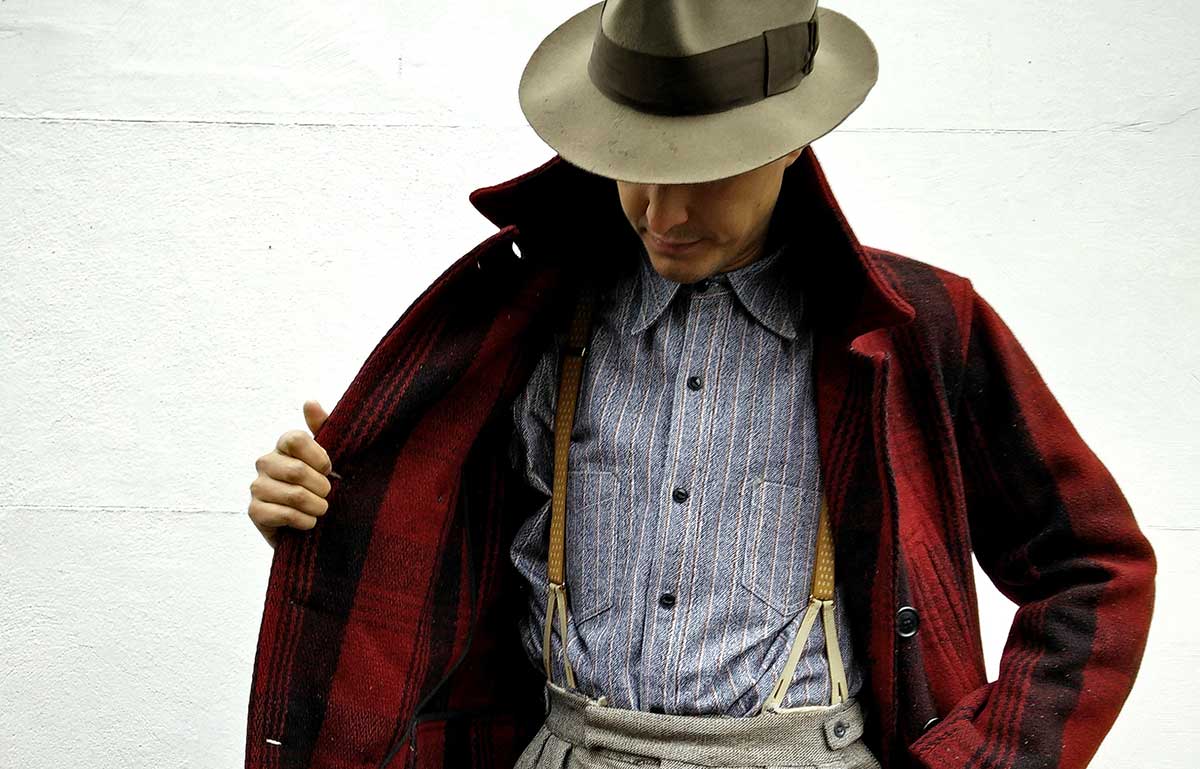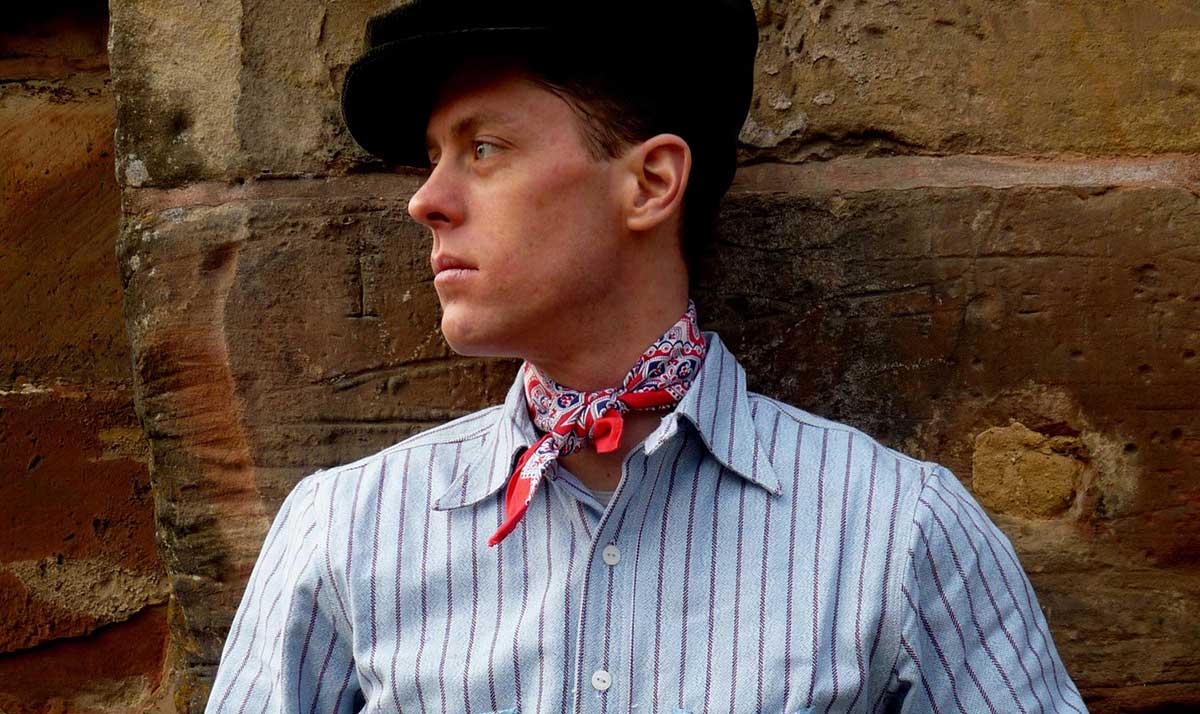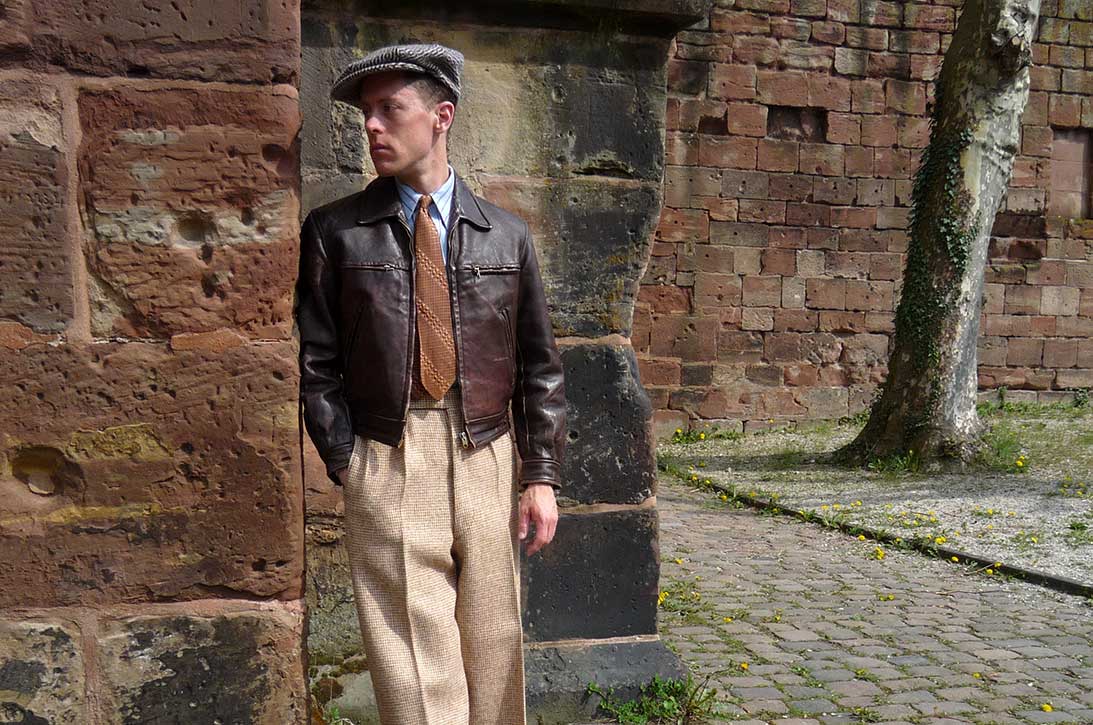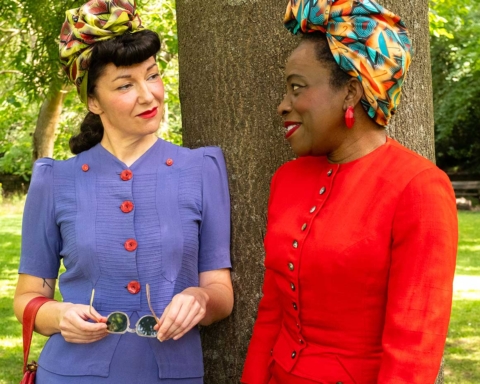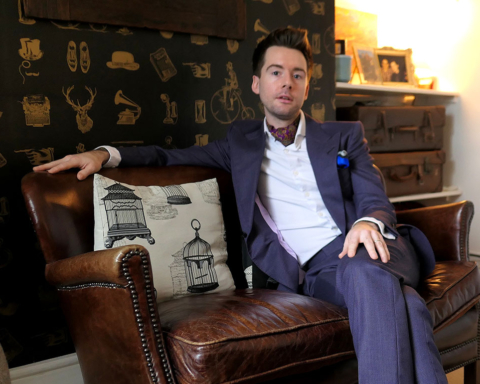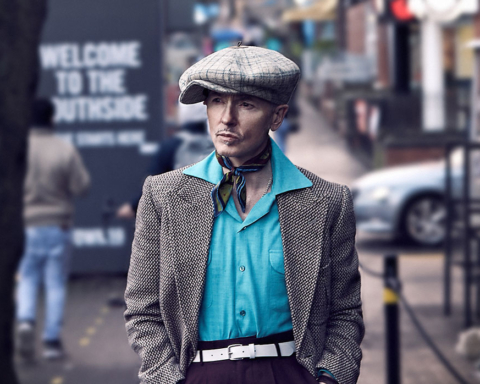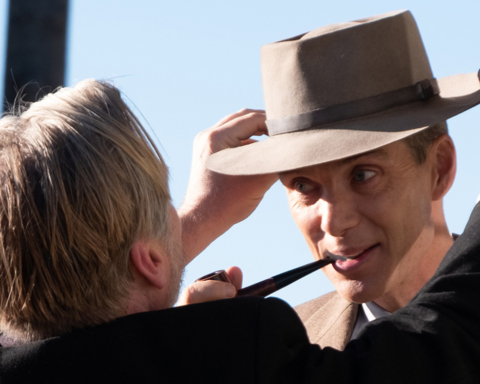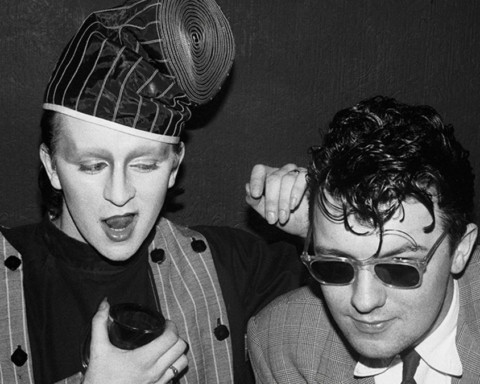Simon James Cathcart, ahead of opening his first pop-up shop in London, with which The Chap will be collaborating, reveals in an interview conducted in The Chap in issue 92 the origins of his ideas for the menswear brand he founded and continues to evolve. You can read about the pop-up shop at the Clerk’s House, Shoreditch, on 12th-18th March 2020 here.
Your business model appears to be slightly unusual. Could you explain how it differs from other new fashion labels?
SJC differs by demand, detail and price. My core buyers wear and own some of the most complete vintage wardrobes in the world. So they are very exacting and fickle to a degree that borders on obsessive. This drives me further and harder than most would normally go. But since I myself appreciate and have worn vintage since about 14 years old, I completely love it. Whatever they require from me, I always make from scratch, and I mean from the ground up. So, for example, for the wide-leg flannel trousers I have had to remake Corozo nut sunburst painted buttons, weave the cloth, weave the waistbands, all from scratch. The vintage polo shirts have river shell buttons created from scratch for them. Nearly every component of what I have to assemble is made before I even start making the clothes.
How does this work when you have to make expensive flannel, for example?
When I commissioned this 16oz English Flannel in cream, the mill got rather cross, because lint floating in the mill air could contaminate the cream flannel, and the cream will fast become blue or orange, depending on what they are weaving in a nearby loom. So they had to stop production of their other cloth making and quarantine the cream flannel loom just for my weave. This is costly and time consuming. This is why you don’t get cream flannel so readily on the market, yet many men crave it to wear with, say, a classic navy blue blazer.
Your brand seems to have found a very appealing period style that is difficult to place accurately. Could you help us?
SJC embraces all eras and decades. My current interests are 1910 to 1930. But I do like youth movements or outsider apparel, as they tend to spiral up the fashion chain with sincerity. See the bamboo polo shirts I made; they are both a youthful piece but also can be worn by men and women of all ages. My inspiration for them was British 30s seaside shots, but I ended up getting more factual information from an original polo shirt pattern from LA from 1932. Youth or street style is always a good jumping off point when lifting sartorial rocks to peek at life underneath.
Do you copy original patterns or base your own patterns on existing vintage garments?
To copy an original pattern is often just the starting point. Remember most vintage was mass manufactured, so those pieces are still around but a lot of it is quite boring in the main; they only come alive when you merge the best of that era together to a certain point. My objective is to offer the best of that era in a few pieces. A synthesis of several pieces into one. Another thing to note is that SJC is men’s fashion, not vintage fashion, so it moves each year. Of course I will build standards like the flannel trousers and the polo shirts, but you build on these things to keep your customers inspired and looking as good as you possibly can.
Are you aiming to reproduce a certain look from a certain period in the past, or create something new?
SJC’s goal is to make men beautiful again. I want men to engage with colour and patterns and form as they once did. In the 1920s a man would walk into a men’s department store and spend hours picking out cloth and silks and question designs and patterns and take risks. Today we are taught to believe this is feminine, or only for the elite of society. Somehow today nearly all men dress in drab shades and formless shapes. But SJC is here to offer a lifeline to stop all this nonsense. I engage with men daily who say to me, “I’d love this, or how do I look in this, I love this colour, can you make this?” It is liberating for them to feel confident to be able to discuss these things, so this is just the starting point. The clocks are going back. I want to free men from metrosexuality (hideous word) and to offer sanctuary and push beauty to heights for chaps that we have not seen for many years.
Your models are all strapping youths. Would the clothes work equally well on men at a later stage in life?
Actually the average age is from 30-65. I was once selling at the Vintage Car Boot sale, where I was afforded the opportunity to engage with customers for the first time. To have a 65-year-old chap say, “Hello, I am X and I bought the polo shirts, they are wonderful!” is a remarkable experience. Both to have aided someone’s self esteem and to meet this person in the flesh is a truly rewarding experience.
Your website declares that you are an apparel and lifestyle brand – what does this mean, exactly?
It is not simply about the clothes you wear that defines you as a chap; it is everything: the cars we drive, the music we listen to, the books we read and, of course, decor and the pieces in our homes. So I am merely projecting ahead, as the brand cannot simply be confined to apparel. The Chaps I serve need to have everything just so in their lives, from quality hair pomade, which I am making, to a wooden butler, to a sofa that is in keeping with their aesthetic. I recognise that there is much still available as far as antiques to serve this, but, much like, say, a good pair of Flannel trousers or a vintage polo shirt, a sofa after 80 years tends to get a bit tired. So they must be remade and they must be remade to the levels of detail that SJC can now deliver.

